 It’s fair to say that this is at the poppier end of the music we feature on musicriot.co.uk, but we always like to keep an open mind. Astraea has one of those voices that sounds like you’ve heard it before, and you probably have. She’s done loads of stuff across various platforms and her voice also has hints of Kate Bush (with steroid production) and maybe Ellie Goulding as well. Not only that, she writes, performs and produces and does her own distribution as well. In a musical world that’s so male-dominated, that has to be a good thing. And it’s obviously working, because her high-profile collaborations include Jack Savoretti, Ward Thomas, Nina Nesbitt and Lewis Capaldi.
It’s fair to say that this is at the poppier end of the music we feature on musicriot.co.uk, but we always like to keep an open mind. Astraea has one of those voices that sounds like you’ve heard it before, and you probably have. She’s done loads of stuff across various platforms and her voice also has hints of Kate Bush (with steroid production) and maybe Ellie Goulding as well. Not only that, she writes, performs and produces and does her own distribution as well. In a musical world that’s so male-dominated, that has to be a good thing. And it’s obviously working, because her high-profile collaborations include Jack Savoretti, Ward Thomas, Nina Nesbitt and Lewis Capaldi.
So that’s Astraea, what about the song? It’s a love song and it opens quietly with a gentle vocal, subtle bass, and piano arpeggios, then builds and keeps on building, each chorus getting bigger and louder providing more and more support for the breathy, ethereal voice. There’s also a niggling familiarity about the pre-chorus; it has a melody that’s similar to the pre-chorus in “Lucy in the Sky With Diamonds” and leads perfectly into the chorus in exactly the same way. Like a good story, “Nobody Loves Me Like You” has a start, a middle and an ending, all in the right order; it’s uplifting and you’ll feel better for hearing it.
“Nobody Loves Me Like You” is out now. Have a listen here:
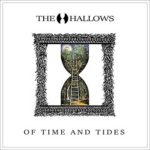 Let’s get this out of the way right from the start; Sarah Rodriguez, singer and keyboard player with The Hallows, sounds a bit like Kate Bush. There, I’ve said it now. I’m also going to say that she doesn’t do any of the piercing, high-register, polystyrene on a window stuff that Kate Bush inclines towards, so that’s pretty much a win-win. “Of Time and Tides” has an identity and sense of cohesion that isn’t always apparent in early albums. There’s a sense of assurance about the way the album’s produced as well; there’s nothing tentative about this album.
Let’s get this out of the way right from the start; Sarah Rodriguez, singer and keyboard player with The Hallows, sounds a bit like Kate Bush. There, I’ve said it now. I’m also going to say that she doesn’t do any of the piercing, high-register, polystyrene on a window stuff that Kate Bush inclines towards, so that’s pretty much a win-win. “Of Time and Tides” has an identity and sense of cohesion that isn’t always apparent in early albums. There’s a sense of assurance about the way the album’s produced as well; there’s nothing tentative about this album.
The songs are all strong, well-constructed and with memorable melodies, but the real selling points for the album are the varied arrangements and use of a huge dynamic range throughout. The studio versions of the songs are liberally sprinkled with fairy dust in the form of layered, multi-tracked and counterpoint vocals, strings, samples, acoustic and electric guitars, pianos and synths. Each of the songs has its own distinct character with Sarah’s bold and distinctive vocals creating a cohesive unity for the album.
As you might expect with a trio format of drums (Joe Rodriguez), Dave Pugh (bass) and Sarah Rodriguez (keys and vocals) the basslines are more than just a solid bottom end; there’s plenty of melody there as well. Who needs a lead guitar player anyway? If one song encapsulates the spirit of this album, it’s “Angel”, where strummed acoustic guitars, layered vocals and shimmering guitars give way to an absolutely monstrous bass riff as the band briefly demonstrates its heavy credentials before sliding back into ethereal mode again for the finish of the song.
And a word to the wise here. This isn’t a studio confection; the band’s more than capable of creating a huge sound when they play live and Sarah Rodriguez’s vocals sound, if anything, even better in that situation. You can hear for yourself at these gigs.
“Of Time and Tides” is released on Friday August 25th.
“Angel”? Oh, go on then:
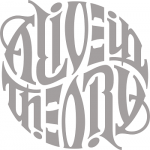 This combined effort from singer Kirsty Mac, multi-instrumentalists Paul Ayre and Tony Draper, known collectively as Alive in Theory, has a lot going for it. There’s some great playing, the vocal performances are pretty powerful and the songs are mostly pretty strong, so where do we start? At the very beginning, it’s a very good place apparently. Actually the opening song “Alive in Theory” isn’t a bad summary of the album; it’s full of drama, it has a wide dynamic range and a sense of menace. The intro has a feel of “Radio Gaga” and, strangely enough, there’s a little guitar fill which is pure early seventies Brian May. The vocals across the album hint at a Gothic Kate Bush, with maybe a little hint of Kim Carnes in there as well (the eighties drums and brooding synths of “Lightning” have a strong feel of “Bette Davis Eyes”). Now that wasn’t too bad for you was it? But it’s not the whole story because there are a few reservations.
This combined effort from singer Kirsty Mac, multi-instrumentalists Paul Ayre and Tony Draper, known collectively as Alive in Theory, has a lot going for it. There’s some great playing, the vocal performances are pretty powerful and the songs are mostly pretty strong, so where do we start? At the very beginning, it’s a very good place apparently. Actually the opening song “Alive in Theory” isn’t a bad summary of the album; it’s full of drama, it has a wide dynamic range and a sense of menace. The intro has a feel of “Radio Gaga” and, strangely enough, there’s a little guitar fill which is pure early seventies Brian May. The vocals across the album hint at a Gothic Kate Bush, with maybe a little hint of Kim Carnes in there as well (the eighties drums and brooding synths of “Lightning” have a strong feel of “Bette Davis Eyes”). Now that wasn’t too bad for you was it? But it’s not the whole story because there are a few reservations.
Musically, “Unconditional”, isn’t bad but it demonstrates a few of the album’s downsides. The lyric has a feel of a rhyming exercise that doesn’t convey too much meaning, the vocal is a bit melodramatic and it follows a format that’s repeated through the album of a gradual layer-by-layer build-up of songs. It’s not that any of these things make it a bad album, more that without them, it could have been a better album. Glad we got that out of the way.
On the upside, the driving power of “Bethany” and the combination of distorted guitars and synth sequences works well and would fit in well in a vampire TV series while using an apocalypse as metaphor for a broken relationship in “We Are All Alone” is fairly effective. The album’s closer “The Other Side” stays just the right side of the bombastic line with channel-hopping synths, pumping bass, some Doors-style piano and a final dramatic held vocal note. If you like a bit of drama, musically and lyrically, you’re in the right place.
“Abandon” is released on Friday March 3 on Ultraviolet Records (ULTRA001-2017).
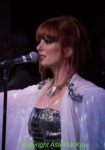 Another Friday night, another new venue in Shoreditch. Deep in the basement of the Ace Hotel on Shoreditch lurks a bar called Miranda with a small stage, nice sound system and reasonable stage lighting. The audience was a bit of an eye-opener as well; sparkly dresses and bright eye make-up as opposed to the jeans, cowboy boots and faded tour t-shirts I usually see. The reason for all the finery was the launch of the first EP by Daisy and the Dark, the latest incarnation of Sarah Kayte Foster, a former Mediaeval Baebe.
Another Friday night, another new venue in Shoreditch. Deep in the basement of the Ace Hotel on Shoreditch lurks a bar called Miranda with a small stage, nice sound system and reasonable stage lighting. The audience was a bit of an eye-opener as well; sparkly dresses and bright eye make-up as opposed to the jeans, cowboy boots and faded tour t-shirts I usually see. The reason for all the finery was the launch of the first EP by Daisy and the Dark, the latest incarnation of Sarah Kayte Foster, a former Mediaeval Baebe.
Not surprisingly, Sarah has a superb voice and she’s surrounded herself with quality musicians, including Keltrix violinist Sharon Sullivan to create a full live sound augmented by backing tracks and accompanied by back projection and four dancers; not so much a gig as a multi-media event. Opening with the EP’s lead song “Circus”, the set was well-paced and demonstrated Sarah’s stunning voice in a variety of musical settings as well as across a huge dynamic range.
If you like your live music with a bit of theatre and glamour, this is for you. There’s a lot going on, with guitar, drums, two backing singers and four dancers, not to mention the illuminated, flashing hula hoops. All of this is cleverly woven in to the songs themselves and it works in the same way that a Kate Bush or Bjork show does; there’s always plenty to watch. Sarah has a voice that has been compared to both of those singers (and Florence Welch), but a setting like Miranda also gives her the chance to relate to the audience and create a more intimate experience.
It’s been a while since I saw anything quite like this; a spectacle rather than just a gig, but Daisy and the Dark do it very well indeed and by the end of a short set, the audience was hooked and I was impressed by Sarah’s new material. It’s time for this Daisy to see some daylight. Here are some photos from the gig.
Have a look at the video for “Circus” to get some idea of what it’s all about:
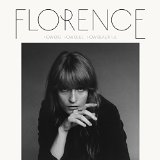 Florence + The Machine is a relatively rare and interesting type of multi-million selling global superstar to be found in this or even the past decade. She is more suited to the mid-eighties/nineties stretch of pop stars that included Kate Bush, Prince and Bjork – artists that used idiosyncratic and sometimes iconoclastic imagery that was key to their success but didn’t define it and whose music was frequently strange and brilliant but sold by the shed load. Where Florence Welch differs from her idols though is that her musical choices so far have found the singer already approaching what could be regarded as caricature of herself. Her debut album “Lungs” was a rag-tag but solid collection of goth-pop which established her eclectic eccentricity and 2011’s highly polished “Ceremonials” had some fantastic songs which were often marooned in a samey, shouty and exhaustingly one-note soundscape. “How Big, How Blue, How Beautiful” sees Florence set out to actively change this, to breath nuance and restraint and personal experiences into an album’s worth of songs.
Florence + The Machine is a relatively rare and interesting type of multi-million selling global superstar to be found in this or even the past decade. She is more suited to the mid-eighties/nineties stretch of pop stars that included Kate Bush, Prince and Bjork – artists that used idiosyncratic and sometimes iconoclastic imagery that was key to their success but didn’t define it and whose music was frequently strange and brilliant but sold by the shed load. Where Florence Welch differs from her idols though is that her musical choices so far have found the singer already approaching what could be regarded as caricature of herself. Her debut album “Lungs” was a rag-tag but solid collection of goth-pop which established her eclectic eccentricity and 2011’s highly polished “Ceremonials” had some fantastic songs which were often marooned in a samey, shouty and exhaustingly one-note soundscape. “How Big, How Blue, How Beautiful” sees Florence set out to actively change this, to breath nuance and restraint and personal experiences into an album’s worth of songs.
Markus Dravs has taken over almost all production duties from Paul Epworth (who still co-produces one track here) and has laid down the law, it seems, telling Welsh that certain well-worn subjects are off-limits, such as water metaphors (a few still slip through the net, excuse the pun) and an early song called “Which Witch” bought to him by Welch was rejected because of song title only (and that too still appears, but as a bonus track only). He wanted to put her voice up front and to be more exposed and vulnerable, less multi-tracked, and for the music to also have space to breathe. Will Gregory, the introvert half of Goldfrapp, was bought on board as Welch wanted lots of brass and she’s certainly got her wish. It seems that there was some compromise on both sides, as this is a different Florence album in part, but it is not to be considered as any real, radical departure in sound. With the strength of songwriting on display here and a successful transition to more interesting and diverse soundscapes this is not important, it’s the most balanced and cohesive album that Welch has made thus far.
The first song to be heard from “How Big, How Blue, How Beautiful” was the striking “What Kind of Man”. With Welch’s voice manipulated to echo that of Karin Andersson from The Knife, she sounds genderless and possessed and it’s something of a shame that guitars and drums crash in all too soon. The mania and panic associated with Welch and evidenced here again is offset beautifully by a return to the coolness of this initial refrain though and “Ship to Wreck”, with its soaring near gospel middle-eight, continues with the indie rock motifs . The title track’s opening line ‘between a crucifix and the Hollywood sign’ is not the only thing that sounds like you might hope a Madonna track would in 2015; it has a spaciness and warmth that is designed to be heart- swelling and it is. The long instrumental play-out is the most optimistic that a Florence track has ever sounded, assertive trumpets and forthright strings herald a new dawn with all of its possibilities. Sounds cheesy perhaps but it’s sincere and as gorgeous as hell.
“Various Storms & Saints” and “Long & Lost” continue with an acoustic, bare bones but lush instrumentation and “Caught” is a mid-tempo r’n’b song with an unexpected country sway and is swoonsomely heartbroken. Over a plaintive organ and understated orchestration it is “St Jude” which cements absolute melodic perfection with Welch’s forever fallen angel, compulsively drawn to chaos. “Delilah” and “Third Eye” will delight the Florence diehards with both tracks pulling across the established, bombastic and commercial sound from her previous two albums and turning the dial up even further to not-quite ludicrous settings. Album closer “Mother” incorporates all of these ingredients but stirs them about with a 1970’s blues-rocker shtick that creates something altogether more strange and the final, thrashing fifty seconds genuinely excite. Florence + The Machine may never be able to do subtle but with “How Big, How Blue, How Beautiful”, Welch has made considerable progress with making music that is more complex, satisfying and timeless sounding than before, never alienating her current fan base and undoubtedly attracting many more new ones in the process.
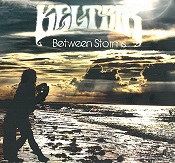 “Between & Beyond Storms” is the second album from Cambridge-based duo Keltrix, who are Keri Kel (singer, songwriter and guitarist) and Sharon Sullivan (violinist and producer) and it’s a bit of an interesting one. There’s a combination of folk and Celtic roots with elements of rock, reggae, trip-hop and harder-edged dance beats. The Keltrix mission seems to be to create something new by fusing all of these elements into a new genre. It’s not just a double album, there’s a major tour and a documentary film to follow; there’s a lot of creativity and plain hard graft going into this. So, does it work?
“Between & Beyond Storms” is the second album from Cambridge-based duo Keltrix, who are Keri Kel (singer, songwriter and guitarist) and Sharon Sullivan (violinist and producer) and it’s a bit of an interesting one. There’s a combination of folk and Celtic roots with elements of rock, reggae, trip-hop and harder-edged dance beats. The Keltrix mission seems to be to create something new by fusing all of these elements into a new genre. It’s not just a double album, there’s a major tour and a documentary film to follow; there’s a lot of creativity and plain hard graft going into this. So, does it work?
As always, this is purely a personal opinion; feel free to tell me if you think I’m wrong, but I’m not convinced. For me, the strongest tracks are on the “Beyond Storms”. The reworking of “Alibi” as “My Alibi” works and, in the middle of the set, “Displacement” and the remix of “Endure” both have an ambient, trip-hoppy feel and lots of space, allowing the songs plenty of room to breathe. These three songs, particularly “Displacement”, would stand up alongside anything else I’ve heard this year.
And that’s the upside, but there is a downside. There are a few things that don’t work at all for me and they’re connected with the individualism the band is trying to create. Keri Kel’s singing mashes up folk intonations and inflexions with elements of Kate Bush and Lene Lovich (maybe even Marianne Faithfull from the seventies onwards) and sometimes becomes a distraction, pulling the attention and focus away from the song. There’s also a bit of a kitchen sink mentality; there are loads of ideas bouncing around and it seems to be important to try to cram all of them in, so we get songs with lots of tempo changes and lyrics which sound rushed to try and fit in with the melody.
Keltrix mixes up a huge variety of styles and getting the blend right isn’t something that happens overnight. If you look at this album as part of the journey, rather than the ultimate destination, then it makes a lot more sense.
“Between & Beyond Storms” is out now.
We’ve published a few pieces about Vera Lynch this year and we were very sorry to hear that the band had decided to split at the end of October. Despite having an incredibly hectic schedule touring in Japan, former singer Guy Harries made time to tell us about his favourite five musical events of 2014.
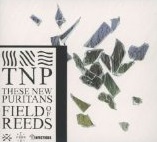 These New Puritans live at the Barbican – 17 April 2014
These New Puritans live at the Barbican – 17 April 2014
An astounding live show in which the band performed their spellbinding album “Field of Reeds” with a large ensemble (members of the Heritage Orchestra) and vocalists (Synergy Vocals), along with a couple of older material and a new track. The material is so nuanced, intricate and complex, that it was a wonder that it could be played live. I later found out that the performance was recorded and will be released soon.
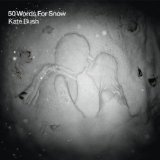 Rediscovering Kate Bush’s more recent material
Rediscovering Kate Bush’s more recent material
The whole buzz around Kate’s live comeback (which, alas, I did not manage to attend), encouraged me to have another listen to her album “Aerial” from 2005 (which I didn’t really think much of at the time), as well as her more recent “50 Words for Snow”. This time around, I found a deeply moving voice of an artist who is true to her own artistic vision, takes her time to move beyond short song -form to create atmospheric, personal songs with a melancholy touch that I highly recommend for these wintry months…
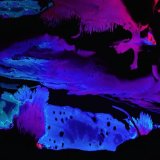 Le1f – live in Oslo, Hackney London – May 2014
Le1f – live in Oslo, Hackney London – May 2014
This musician stretches the boundaries of rap music in terms of sound, agendas, voices and looks. I particularly like his “Liquid EP”, in collaboration with producer Boody. His live performance in Hackney this year was no disappointment, revealing a charismatic artist, with some killer dance moves.
 GusGus returns
GusGus returns
On the heels of their recent album “Mexico”, which is a return to form for this Icelandic band, the band performed in Koko, London in November. Underground house beats and soul-drenched vocals from Daniel Agust and Stephen Stephensen were a complete treat. Unfortunately, the set was too short and we had to shift to make way for the ensuing NME club night.
 Aurora Orchestra playing Benedict Mason’s Meld at the Proms 2014
Aurora Orchestra playing Benedict Mason’s Meld at the Proms 2014
This spectacular piece makes use of the entire Albert Hall, with musicians constantly moving throughout the whole space, including the galleries, entrance corridors, back stage, and audience area. It questions what a musical performance or classical concert is and was utterly immersive.
 The first and last tracks on the third album by US female singer songwriter White Hinterland act as a misleading but appropriate prelude and postscript to the bulk of “Baby”. Misleading as, apart from one revisit to the downcast “David”, these tracks do not resemble the songs that they bookend in musical style at all. The album opener, “Wait Until Dark”, is tense and paranoid; unaccompanied vocals are finally joined by a lone, dominant piano which seems to circle the neighbour block referred to in the song’s lyrics. It’s a dramatic and attention-seeking opening and shows how far Casey Diesel has come as a performer since White Hinterland’s debut in 2008; she sounds fantastic. The last track “Live With You”, again just piano and vocals, sees some sort of resolution and tells of domesticity and a realisation of love, it’s warm and inhabits the soulful world of Laura Nyro or Carole King. So what of the remaining eighty per cent?
The first and last tracks on the third album by US female singer songwriter White Hinterland act as a misleading but appropriate prelude and postscript to the bulk of “Baby”. Misleading as, apart from one revisit to the downcast “David”, these tracks do not resemble the songs that they bookend in musical style at all. The album opener, “Wait Until Dark”, is tense and paranoid; unaccompanied vocals are finally joined by a lone, dominant piano which seems to circle the neighbour block referred to in the song’s lyrics. It’s a dramatic and attention-seeking opening and shows how far Casey Diesel has come as a performer since White Hinterland’s debut in 2008; she sounds fantastic. The last track “Live With You”, again just piano and vocals, sees some sort of resolution and tells of domesticity and a realisation of love, it’s warm and inhabits the soulful world of Laura Nyro or Carole King. So what of the remaining eighty per cent?
“Dry Mind” opens with heavenly voices, fractured and bouncing vocal samples and a thick, mid-tempo beat. More elements are introduced; further vocal loops, cut and reversed electronics and a melody and rhythm that are more in keeping with indie r’n’b as opposed to the more straightforward Kate Bush art rock that introduces the album. “Ring The Bell” continues with these big, busy extrovert musical themes and brings some gorgeous brass along with it. Diesel soars high above the whole thing and just about manages to take control of what almost teeters on the edge of chaos. These tracks, the style of which makes up the majority of the album’s playing time, are reminiscent of early My Brightest Diamond, a less rigid St Vincent and the playfulness of Tune-Yards but without the world music bias; vocally dominant women who successfully dally in multiple genres, refusing to commit to just one.
“White Noise”, the brassiest track here and also the most forthright, and “Metronome” (about alcoholism and sex respectively) are beat-heavy and uninhibited, delirious but thought-out tunes that serve as the absolute highlights of the set; they also serve to emphasise the shortage of solid songs here. Whilst these tracks grab your attention and maintain it from start to finish they also have tunes that will pop up in your head long after you’ve finished listening to the album and because of Diesel’s incredibly felt and centrally-placed vocals this is a collection of tracks that cry out for melodies that support the strength of her performances. Tracks like “Baby” and “No Devotion”, although drenched in fantastic effects and details, make little lasting impact and even following several album replays it’s as though they are being experienced for the first time everytime.
Enclosed within its acoustic shell, “Baby” is an album full of amazing, buzzing sounds and enduring passions. With each subsequent album Diesel has upped the ante and from the humble, lo-fi beginnings of “Phylactery Factory” to the present, the soundscape has grown to almost a full spectacle. On occasion it’s a little on the rich side; there’s nothing wrong with that but when opulence forsakes structure and a high is sometimes followed by amnesia then a wish for stronger melodies occasionally prevails. Instant impressions based on the aforementioned opening and closing tracks also dictate that the album is listened to in full to avoid what could be considered by some as a nasty surprise. White Hinterland has made something that is, I suspect, deeply personal and with a palpable sense of freedom which is liberating, sometimes garishly so, but despite its shortfalls there is still plenty here to enjoy.
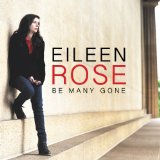 This made-in-Nashville, contemporary country album is full of sweet surprises, the sometimes quirky arrangements, the lyrics, the instruments… It has different moods and tempos and Eileen Rose makes you want to listen to her latest offering, she speaks clearly to her audience, one to one. She’s no newcomer either; a few albums in and plenty of touring and festivals to support them, this is an accomplished and confident sounding album.
This made-in-Nashville, contemporary country album is full of sweet surprises, the sometimes quirky arrangements, the lyrics, the instruments… It has different moods and tempos and Eileen Rose makes you want to listen to her latest offering, she speaks clearly to her audience, one to one. She’s no newcomer either; a few albums in and plenty of touring and festivals to support them, this is an accomplished and confident sounding album.
She started writing at 14, trying to emulate her idol, Kate Bush, but was listening to an eclectic diet of music from Bowie to Linda Rondstadt. Eileen Rose has both American and Irish heritage and her first gigs were around Boston when she was playing mainly folk music. Since then she has also lived in urban Essex and gigged in London for a stint, when she also released two CDs for Rough Trade. She has toured the UK and US with such reputable company as Ryan Adams and Beth Orton, before expanding her growing fan base to Europe. There are many hints on this album, that there is more to her than country as the Jive-paced, “Just Ain’t So” prove and the sultry “She’s Yours”, with fiddle and brushed drums, a well placed accordion also lends a European touch to some tracks.
“Be Many Gone” opens with a bouncy “Queen of the Fake Smile”, complete with lively fiddle. The mood then shifts to a slower pace including the bittersweet, “She’s Yours” and stand-out “Prove Me Wrong”. “Each Passing Hour” features Frank Black as a duet, which doesn’t work so well for me but sonically it rolls nicely with castanets and Mexican sounding trumpet. Eileen Rose plays guitar and taught herself piano, but she also picks up other instruments (including bongos) and is just setting up her own label Holy Wreckords with her collaborator and producer, mixer and engineer of “Be Many Gone”, Rich Gilbert, so it appears that Eileen Rose is experiencing a period of enormous creative growth.
This is an emotionally wrought set of songs where she wears her heart visibly, but in no way is it depressing; Eileen Rose clearly also has a sense of humour, “I can be a good friend, I can be a joker, but you can choke me up now baby with a single glance” (“Comfort Me”). Not that she comes from the old Patsy Cline school of victim lyricism, she clearly empowers herself and shares this, while retaining a capacity for vulnerability and intimacy. Vocally Eileen Rose has a country voice pitched somewhere between Kirsty MacColl and Lucinda Williams, while she doesn’t stretch her voice much on this album, the comfort in her voice contrasts nicely with the sometimes uncomfortable lyrics. If you like country music with European and folky twists, this is definitely an album to check out. Eileen Rose is currently considering playing dates in the UK and if past accolades are anything to go by, it will be a hot ticket!
“Be Many Gone” is out now on Holy Wreckords HWER12714.
Klare rated this album at 3.5 stars, but we can only rate in full stars, so this is 4 stars because I think it’s a great album as well (Ed.)
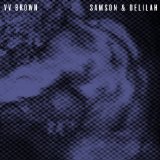 VV Brown’s second album opens with two songs that share Madonna titles but aren’t cover versions. “Substitute for Love” and “Nothing Really Matters” were two of the singles taken from the ultimate Madonna make-over album and mid-career return to form, 1998’s “Ray of Light”. Unhappy with the r’n’b follow up to “Bedtime Stories” (an r’n’b influenced collection itself), Madonna scrapped the entire sessions and hired electrohead, Brit, William Orbit, started calling herself Veronica Electronica and the rest is pop cultural history. Albeit on an entirely different scale, VV Brown has followed Madonna’s lead. About to release her follow up to the successful but underwhelming “Travelling at the Speed of Light” debut, Brown decided the hip hop and r’n’b-dominated follow up, a departure indeed from the nostalgic pop doo-wop of her debut, was not authentic and she walked away from the project and the album was never released. Two years on and as many career changes later she has returned with eleven angry, desolate and soulful songs set against a unsettling, uncompromising soundtrack and it is a startling reinvention indeed.
VV Brown’s second album opens with two songs that share Madonna titles but aren’t cover versions. “Substitute for Love” and “Nothing Really Matters” were two of the singles taken from the ultimate Madonna make-over album and mid-career return to form, 1998’s “Ray of Light”. Unhappy with the r’n’b follow up to “Bedtime Stories” (an r’n’b influenced collection itself), Madonna scrapped the entire sessions and hired electrohead, Brit, William Orbit, started calling herself Veronica Electronica and the rest is pop cultural history. Albeit on an entirely different scale, VV Brown has followed Madonna’s lead. About to release her follow up to the successful but underwhelming “Travelling at the Speed of Light” debut, Brown decided the hip hop and r’n’b-dominated follow up, a departure indeed from the nostalgic pop doo-wop of her debut, was not authentic and she walked away from the project and the album was never released. Two years on and as many career changes later she has returned with eleven angry, desolate and soulful songs set against a unsettling, uncompromising soundtrack and it is a startling reinvention indeed.
Samson & Delilah is released on VV Brown’s own YOY record label so it can assumed that this is what she wants to sound like now with little or no interference from outside parties, and that is remarkable. The aforementioned “Substitute For Love” opens in much the same way as the Madonna track opens “Ray of Light”, gently twinkling notes and ambient synths introduce Brown’s incredible voice which is now several tones lower; a contralto to rival Grace Jones and she sounds magnificent throughout. A dominant all-electronic backing that is somewhere between The Knife circa “Silent Shout” and Massive Attack at their most austere ( think “Sly”) with a mound of sticky dubstep coating the astounding, warrior-like, “Igneous”. It isn’t easy listening and the mood is pitch-black; a couple of songs like the title track can struggle to stand out when the melody is forsaken for a mood but these are minor niggles.
“The Apple”, by some distance the most instant and accessible track here, sounds amazing. Its rolling, funking electro pop assertiveness is magical and Brown has huge fun with the relentless put-downs that lyrically dominate: ‘Don’t testify me, don’t bring me down, don’t hold me captive, you’re not the apple of my eye you see’. “Nothing Really Matter” is a swirling, sombre and sharp-edged synth monster which would have sounded at home on Adult’s last album, VV Brown never before having hinted at this unlikely and inspired direction.
“Faith”, track eight of eleven, finally allows a chink of light to spill through and is more lifting sonically and melodically than anything preceding it. A duet with an uncredited male, it quietly references George Michael and with its theme of rebirth (‘I shake it off as I fall down to the ground, I belly flop into a swimming pool of sound, so you got to have faith’ ) and hope and a melody that will stick for days, it’s one of the strongest and most soulful songs here. “Ghosts”, in which Brown’s vocals spectacularly morph into 80’s singer songwriter Joan Armatrading, continues with similar themes and benefits from some simple but brilliantly constructed vocal effects over a droning organ and tight drum machines.
The album ends with two tracks which bring to mind a singer/songwriter who is now an almost-cliched reference point for artists and music fans alike. I’m loath to point out the similarities in the songwriting between that of the haunting “Knife” and Kate Bush’s “This Woman’s Work” and the foggy, suffocating album closer “Beginning”, which sounds like a lost track from Bush’s “Ninth Wave” concept album which formed the second part of ‘Hounds of Love’. These aren’t parodies though, as is often the case, they are very well crafted compositions from an artist who may or may not be familiar with Bush’s work (I suspect the former) and to draw such genuine comparisons is a compliment indeed.
“Samson & Delilah” never goes too far, gets too crazy or attention-seeking. The measured and meticulous tone and pacing of this album is a very large part of its success. VV Brown will have her work cut out for her when it comes to the initial promotion of this admittedly difficult album (for such a visual artist she has made the odd decision to hardly feature in the videos for the first two singles) and many will not make the connection between the Marks and Spencer model and former pop star and Brown’s current, definitive form. Twelve months down the line though, and many people will have hopefully been exposed to this album while having no idea who the artist is and it will become so something of a word-of-mouth slow burner. By any standards, this is a heartfelt and bold collection and a testament to VV Brown’s self belief.


